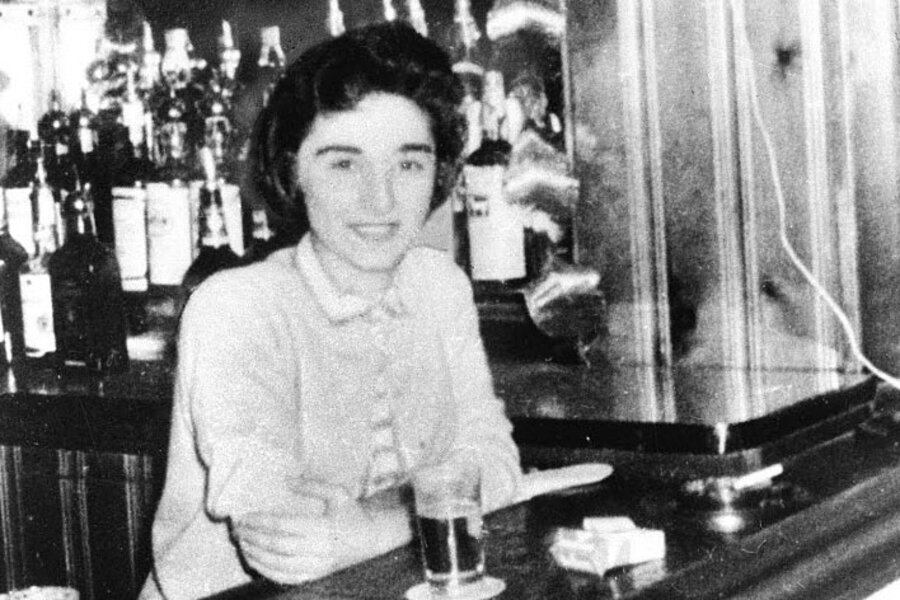Kitty Genovese murder: would you have helped?
Loading...
Fifty years on, the murder of New York bar manager Kitty Genovese continues to be plumbed for social meaning.
After a 1964 New York Times story erroneously reported that 38 onlookers had neglected to help Ms. Genovese while she was repeatedly assaulted outside her apartment late one night (just one phoned the police afterward, according to the Times), the incident was held up as a symbol of many dark forces: urban malaise, racial unrest, and callous disregard for the lives of strangers. During the murder trial that followed, one witness explained, "I didn't want to get involved."
Many of the details reported by the Times have since been debunked: only a handful of people saw the attack clearly, one of whom initially drove the attacker away by shouting. Others called an ambulance, and when it arrived, a neighbor was holding Genovese in her arms.
But in the decades that passed before the story's revision, the murder spurred painful questions about human nature. Surely 38 random strangers couldn't all be sociopaths; so what went wrong?
In 1968 social psychologists John Darley and Bibb Latané conducted an experiment in which a stranger apparently suffered a seizure in view of bystanders. The more bystanders were present, they found, the less likely each one was to offer help. The theory they developed, "diffusion of responsibility," suggested that the likelihood of "bystander intervention" had less to do with compassion and more to do with the belief that others would step in.
"The responsibility for helping was diffused among the observers," they wrote. "There was also diffusion of any potential blame for not taking action; and finally, it was possible that somebody, unperceived, had already initiated helping action."
Darley and Latané's findings have held up over the years, under myriad experimental variations; restaurant guests, for example, tip less as the size of their party grows.
More seriously, a 2001 analysis found that expanded use of the death penalty accompanied a decline in death row pardons. As capital punishment has become more widespread in the US, a wider variety of legal bodies – the Supreme Court, governors, and state pardon boards – have come to hold each other responsible for granting clemency, and fewer pardons have been granted.
The findings have held up so consistently, in fact, that in March 2003 a Newsweek reporter interviewing the US Secretary of Defense asked whether the international community's hesitation to invade Iraq could be explained as "a Kitty Genovese moment."
Nevertheless, as the social sciences have moved toward research methods capable of exploring social contexts and meanings, Darley and Latané's work has been criticized as too simplistic.
A 1999 article in the journal Human Relations analyzed a 1993 murder case to argue that understanding of so-called "bystander apathy" was "hampered by a focus on the physical co-presence of others rather than an analysis of the social meanings." When two 10 year olds abducted and killed a two year old, 38 witnesses – an eery echo of Genovese's murder – said they had seen the boys walking together through Liverpool but done nothing.
The case demonstrates the impact of "social categories" on bystander behavior, say the authors; most witnesses said they assumed the boys were brothers, even after the victim had been visibly wounded. Other studies have revealed a widespread hesitation to intervene in violent disputes between people perceived to be couples or family members, supporting the notion that such categories may compete with "diffusion of responsibility" in guiding bystander responses.
Some studies have looked for factors that may sharpen bystanders' sense of responsibility. A 1980 field experiment on female passersby in New York City found, fascinatingly, that the bystander effect was reversed when a woman in apparent distress met the eyes of a bystander. After making eye contact, the presence of passersby actually made women were more likely to offer help. And a 2008 study of American college men found that a desire to appear masculine and an aversion to appearing weak, played complex roles in their decisions about interfering in violent situations.
The anniversary of Genovese's murder comes at a moment when college campuses across the US are beginning to introduce bystander intervention programs that teach college students to intervene creatively in situations that might veer toward sexual assault.
At a Jan. 22 meeting at the White House on sexual violence, President Obama announced a federal task force to combat campus rape, and released a report emphasizing the need for men to intervene: "Bystanders must be taught and emboldened to step in and stop it," reads the report.








